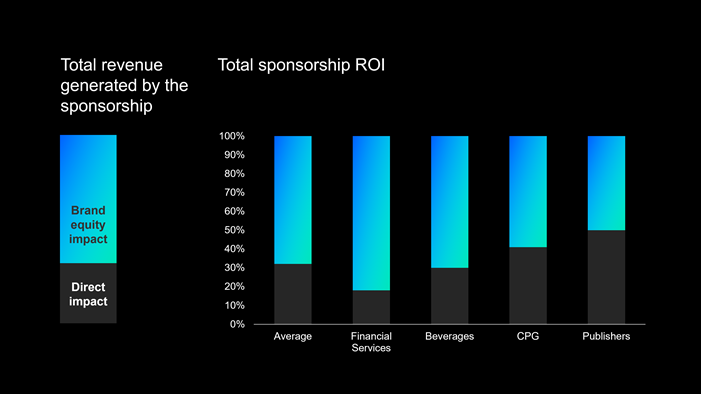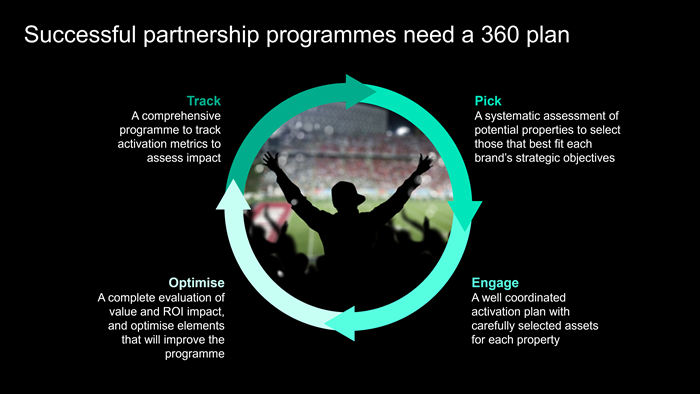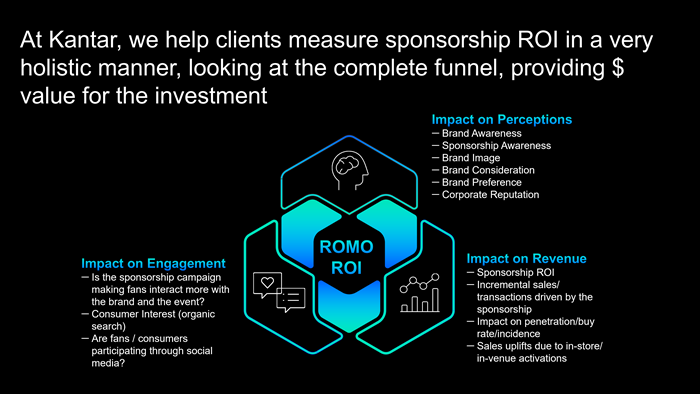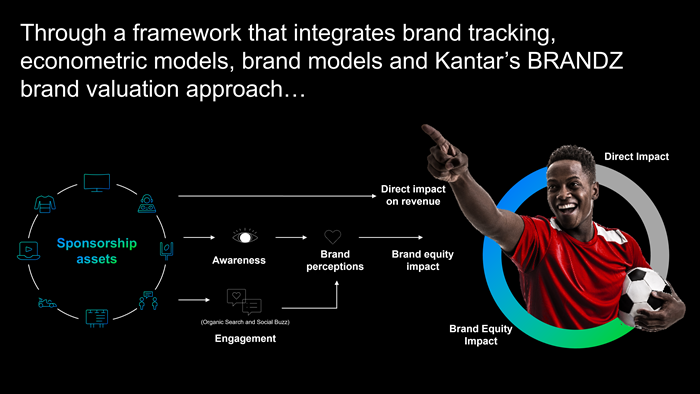The sports sponsorship market was valued at USD57 billion in 2020 and is expected to reach USD89 billion by 2027, growing at a compound annual growth rate of 6.72% between 2021 and 2027. Despite these huge numbers, most marketers concede that they have little understanding of whether sponsorships actually work. Only 19% of sponsorship professionals are confident that they can actually measure the business value return on the sponsorship they undertake and only a third of businesses have a standardised process of measuring sponsorship initiatives.
A frequently asked question by marketers is how to demonstrate the value of sponsorships – and whether they really work?
“Sponsorships do work – and in a variety of ways,” said Sagar Ramsinghani, Analytics Director for MEA Insights Division at Kantar. “Dynamic sponsorship partnerships drive ongoing engagement with customers; build connections with consumers that help build and shift brand perceptions; and help to develop a strong platform for recruitment and to drive consumption, usage and sales.”
Ramsinghani was speaking at a recent Kantar webinar focused on measuring sponsorship effectiveness and return on investment (ROI). The webinar unpacked how companies can define their sponsorship effectiveness, how to decide which sponsorships are best for your brand and arguably most important, how to measure the impact and contribution of the sponsorship on your business.
There has been a shift in marketer expectations of sponsorships in recent years, said Ramsinghani. Increasingly, marketers are looking beyond impressions and clicks to a more holistic way of measuring their investment, including proving the effectiveness of the sponsorship linked to financial outcomes.
“The full value of a sponsorship is a combination of its direct impact on sales and the longer-term impact from driving brand perceptions and engagement,” he said. “Evidence proves sponsorships can create awareness, promote brand associations and allows for deeper consumer engagement that drives long-term effects on brands’ consumption and usage. In fact, the long-term effects from sponsorship programmes are often greater than the direct or immediate effects.”

Most sponsorship programmes deliver strong ROI. “Effectiveness and ROI on sponsorships is very broad. While there are obviously some programmes that don’t deliver a ROI, others deliver double digit ROI. A well-executed sponsorship programme will not only drive revenue for the brand, but also positively impacts key brand perceptions.”
Effective sponsorship programmes rely on a number of factors including selecting the right sponsorship for your brand, the efficient execution of a multimedia campaign around the sponsorship and finally, measuring the impact of the investment and linking it back to the business outcome.
Successful sponsorship programmes need a comprehensive 360 degree plan in place, said Alfredo Troncoso, a Partner in Kantar’s ROI Practice. This starts with identifying potential sponsorship properties and ensuring they fit the brand and its strategic objective.
“Sponsorships play a long-term strategic role in building brand values, brand personality and ultimately, brand equity,” he explained. “They’re a bit like a marriage in the sense that they require compatibility: partners need to share the same values, vision and identity so they can benefit from a sponsorship programme. In addition, they require a strategic fit and consistency.”
Successful programmes tend to have well-co-ordinated activation plans with carefully selected assets for each property. They measure the impact on brand perceptions and awareness on a regular basis and conduct complete evaluations of value and ROI impact. They evaluate which activation assets work better than others, how they contribute to brand perceptions and revenue and then optimise those elements that will improve the programme.

Key to achieving a successful sponsorship, insisted Troncoso, is activation. “A sponsorship on its own is not enough. On average, a minimum of 50% of the sponsorship fee is required to activate the programme with activities ranging from simple awareness building advertising through to an integrated marketing plan built around the core sponsorship itself.”

What brings the whole programme together is linking effectiveness with financial outcomes. This allows marketers to measure the return on their sponsorship spend compared to the return on other marketing investments.

Kantar helps clients measure sponsorship in a very holistic way, looking at the complete funnel including the impact on engagement, perceptions and revenue. The firm leverages multiple sponsorship data assets through a framework that integrates brand tracking, econometric models, brand models as well as Kantar’s BrandZ brand valuation approach.
Want more? Catch the webinar on demand here



